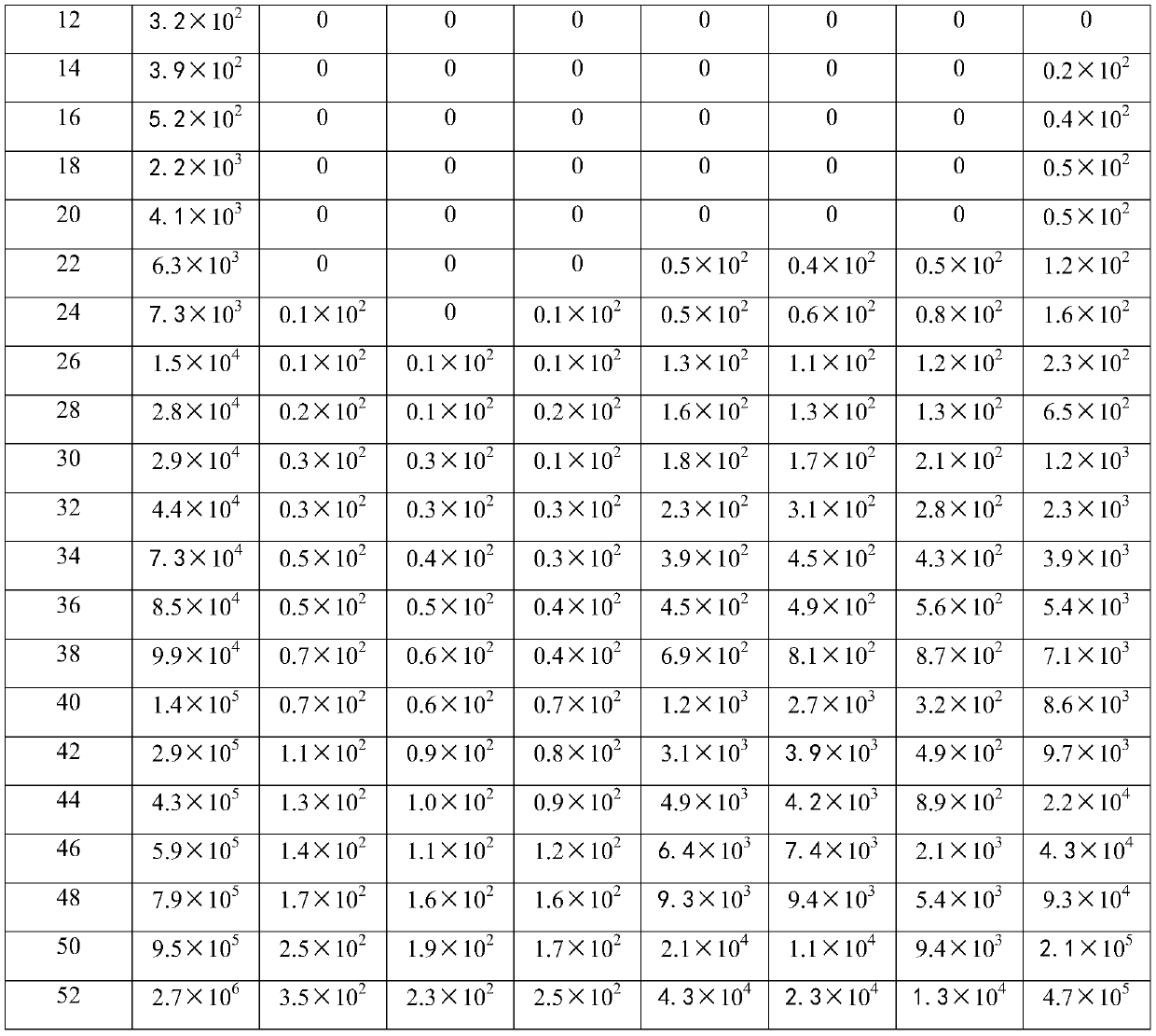Slow-release mold inhibitor for peanut storage and preparation method of slow-release mold inhibitor
A mildew inhibitor and slow-release technology are applied in the field of slow-release mildew inhibitor for peanut storage and its preparation, which can solve problems such as contamination and mildew rot, and achieve the effects of delaying the growth of mildew and simplifying the process.
- Summary
- Abstract
- Description
- Claims
- Application Information
AI Technical Summary
Problems solved by technology
Method used
Image
Examples
Embodiment 1
[0036] This embodiment provides a slow-release anti-mold agent for peanut storage and a preparation method of the slow-release anti-mold agent. The composition of the slow-release anti-mold agent is as follows:
[0037] 1 part of garlic crude extract, 2 parts of cinnamaldehyde, 20 parts of porous adsorption carrier, 25 parts of dry starch.
[0038] Concrete preparation method is as follows:
[0039]1) Dry the dry starch at 100° C. for 1.0 h with the mass-number ratio of corn starch: maltodextrin = 13:1, pack it for later use and control the moisture content below 10%;
[0040] 2) Take 50g of fresh garlic, peel and wash it, crush it into minced garlic, add 100g of absolute alcohol to the minced garlic, stir evenly, extract for 4 hours, and centrifuge after extraction to collect the supernatant to obtain the crude garlic extract, seal it spare;
[0041] 3) After fully mixing 10 g of the garlic crude extract prepared in step 2) with 20 g of cinnamaldehyde, 200 g of diatomaceous...
Embodiment 2
[0044] This embodiment provides a slow-release anti-mold agent for peanut storage and a preparation method of the slow-release anti-mold agent. The composition of the slow-release anti-mold agent is as follows:
[0045] 3 parts of garlic crude extract, 7 parts of cinnamaldehyde, 15 parts of porous adsorption carrier, 35 parts of dry starch.
[0046] 1) Dry the dry starch at 100° C. for 1.0 h with the mass-number ratio of corn starch: maltodextrin = 13:1, pack it for later use and control the moisture content below 10%;
[0047] 2) Take 50g of fresh garlic, peel and wash it, crush it into minced garlic, add 100g of absolute alcohol to the minced garlic, stir evenly, extract for 4 hours, and centrifuge after extraction to collect the supernatant to obtain the crude garlic extract, seal it spare;
[0048] 3) After fully mixing 30 g of the garlic crude extract prepared in step 2) with 70 g of cinnamaldehyde, 250 g of diatomaceous earth was added to the mixture, and left to stand ...
Embodiment 3
[0051] This embodiment provides a slow-release anti-mold agent for peanut storage and a preparation method of the slow-release anti-mold agent. The composition of the slow-release anti-mold agent is as follows:
[0052] 6 parts of garlic crude extract, 9 parts of cinnamaldehyde, 30 parts of porous adsorption carrier, 40 parts of dry starch.
[0053] 1) Dry the dry starch at 100° C. for 1.0 h with the mass-number ratio of corn starch: maltodextrin = 13:1, pack it for later use and control the moisture content below 10%;
[0054] 2) Take 50g of fresh garlic, peel and wash it, crush it into minced garlic, add 100g of absolute alcohol to the minced garlic, stir evenly, extract for 4 hours, and centrifuge after extraction to collect the supernatant to obtain the crude garlic extract, seal it spare;
[0055] 3) After fully mixing 60 g of the garlic crude extract prepared in step 2) with 90 g of cinnamaldehyde, 300 g of diatomaceous earth was added to the mixture, and after being fu...
PUM
 Login to View More
Login to View More Abstract
Description
Claims
Application Information
 Login to View More
Login to View More - R&D
- Intellectual Property
- Life Sciences
- Materials
- Tech Scout
- Unparalleled Data Quality
- Higher Quality Content
- 60% Fewer Hallucinations
Browse by: Latest US Patents, China's latest patents, Technical Efficacy Thesaurus, Application Domain, Technology Topic, Popular Technical Reports.
© 2025 PatSnap. All rights reserved.Legal|Privacy policy|Modern Slavery Act Transparency Statement|Sitemap|About US| Contact US: help@patsnap.com



